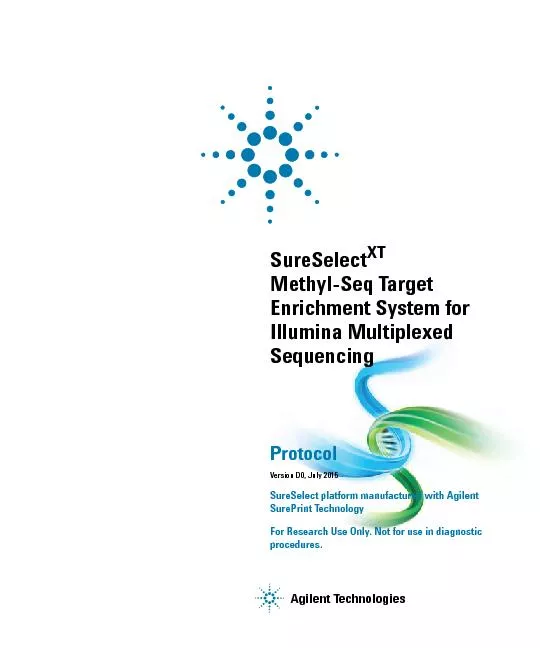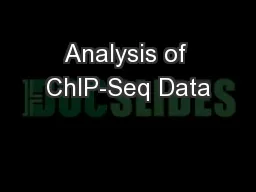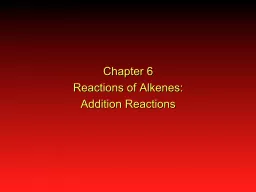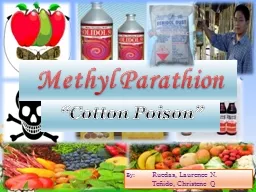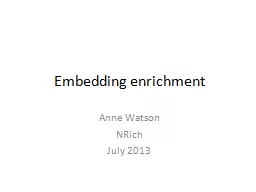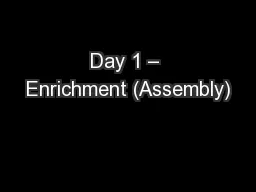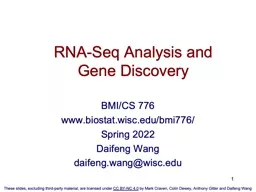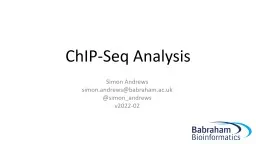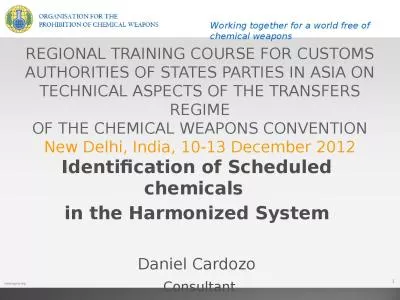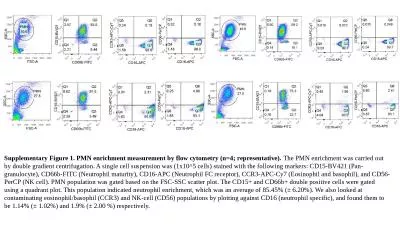PDF-2SureSelect Methyl-Seq Target Enrichment System
Author : ellena-manuel | Published Date : 2016-06-26
notice denotes a haz notice until the indicated met WARNINGA WARNING notice denotes a proceed beyond a WARNING Technical SupportwwwagilentcomchemcontactusFor Research
Presentation Embed Code
Download Presentation
Download Presentation The PPT/PDF document "2SureSelect Methyl-Seq Target Enrichment..." is the property of its rightful owner. Permission is granted to download and print the materials on this website for personal, non-commercial use only, and to display it on your personal computer provided you do not modify the materials and that you retain all copyright notices contained in the materials. By downloading content from our website, you accept the terms of this agreement.
2SureSelect Methyl-Seq Target Enrichment System: Transcript
Download Rules Of Document
"2SureSelect Methyl-Seq Target Enrichment System"The content belongs to its owner. You may download and print it for personal use, without modification, and keep all copyright notices. By downloading, you agree to these terms.
Related Documents

